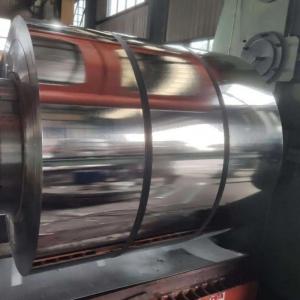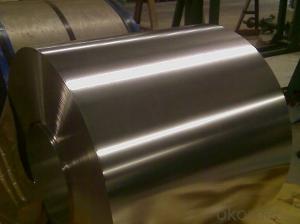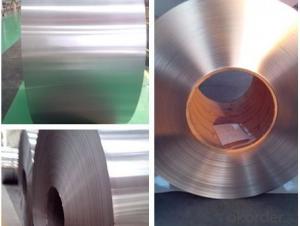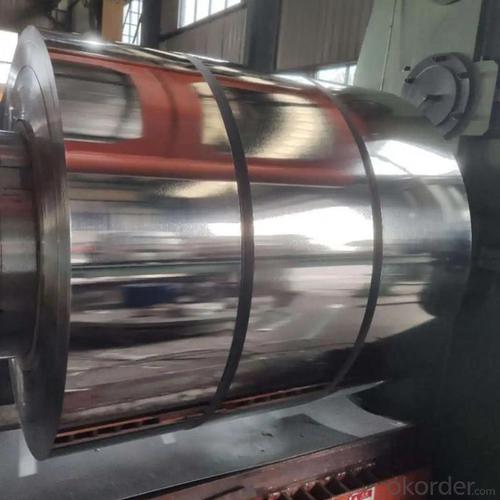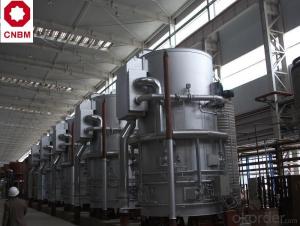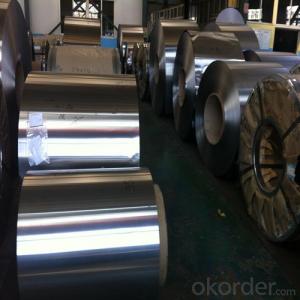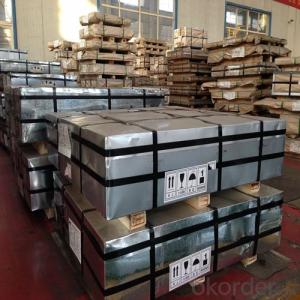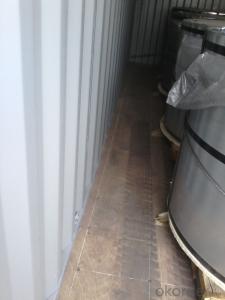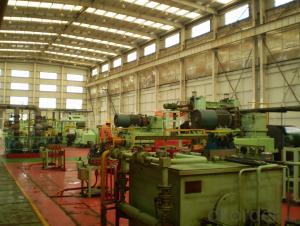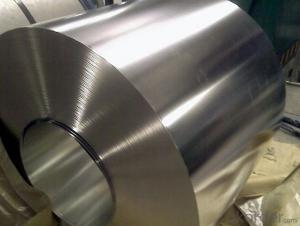Prime electrolytic quality tinplate coil/secondary electrolytic tinplate ETP coil
- Loading Port:
- Tai Chung
- Payment Terms:
- TT or LC
- Min Order Qty:
- 20 m.t.
- Supply Capability:
- 20000 m.t./month
OKorder Service Pledge
OKorder Financial Service
You Might Also Like
1. Structure of ETP Description
Tinplate is sheet steel covered by a layer of tin, widely used in packaging industry and other field.
Tianjin Kunry supply reasonable prices of tinplate with better quality and faster delivery. We hope to conclude business with more customers at home and abroad
2. Main Features of the ETP
Our company has been in the industry for more than 10 years.We have been trusted by domestic owned companies,,as well as international distributors and renowned brands,such as Haier,Kia and Beijing Hyundai etc.We put quality as lifeline.We never manufacture or sale defected products,or lowering our price at the cost of products quality.
3.Prime Electrolytic Tinplate,Tinplate China Images
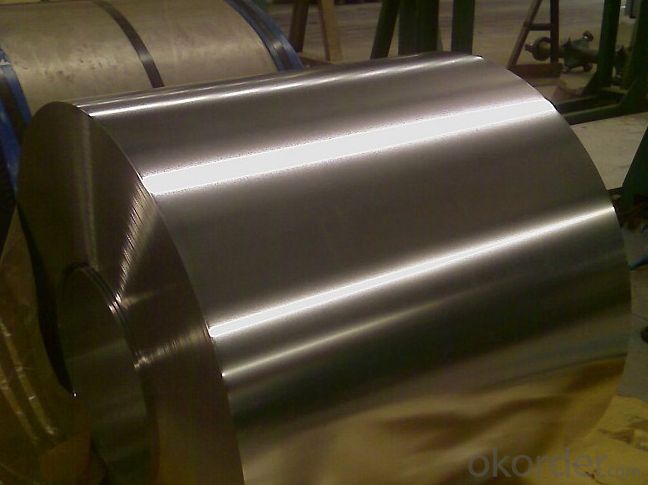
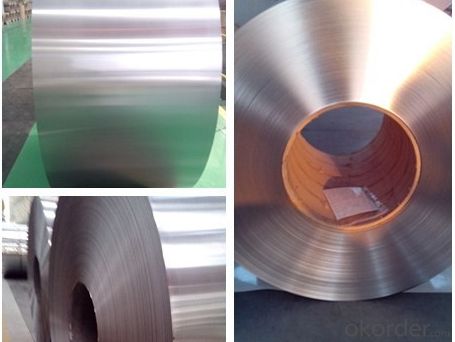
4.Prime Electrolytic Tinplate,Tinplate China Specification
Product name | Prime T3 Tinplate in sheets |
Steel Type | SPCC, MR |
Temper(BA&CA) | T1~T5 |
Coating for the Prime T3 Tinplate in sheets | 1.1~11.2g/m2 |
Thickness and tolerance | 0.15~0.50mm(Tolerance: _+0.01 mm) |
Width & tolerance | 300~1000mm (Tolerance: 0~3mm) |
Cut length & tolerance | 450~``50mm (Tolerance: 0~3mm ) |
Coil inside diameter | 420/508mm |
Coil Weight | Prime T3 Tinplate in sheets weight 3~10 MT |
Passivation | 311 |
Oiling | DOS |
Surface Finish | Bright, Stone, Silver, Matte |
Packaging | Prime T3 Tinplate in sheets with Seaworthy Standard with wooden pallet |
Standards Available | GB/T2520, JIS G3303, ASTM A623M & EN10202 |
- Q: How is tinplate protected during transportation and storage?
- Tinplate is typically protected during transportation and storage through various measures such as applying a protective coating, using appropriate packaging materials, and implementing suitable handling and stacking procedures. The protective coating, often a thin layer of oil or lacquer, helps to prevent corrosion and maintain the integrity of the tinplate. Additionally, packaging materials like plastic wraps, paper interleaves, or cardboard dividers are used to separate and cushion the tinplate sheets, preventing scratches, dents, or other damages. Proper handling techniques, including careful loading and unloading, as well as appropriate stacking methods, ensure that the tinplate remains stable and secure during transportation and storage, reducing the likelihood of any physical harm.
- Q: Can tinplate be used for electrical enclosures?
- Yes, tinplate can be used for electrical enclosures. Tinplate is a type of steel coated with a thin layer of tin, which provides excellent protection against corrosion. This makes it a suitable material for electrical enclosures as it ensures durability and helps maintain the integrity of the enclosed electrical components. Additionally, tinplate is relatively lightweight and cost-effective, making it a popular choice for various industrial applications, including electrical enclosures.
- Q: How does tinplate perform in terms of moisture resistance?
- Tinplate performs exceptionally well in terms of moisture resistance as the tin coating acts as a barrier, preventing direct contact between the metal substrate and moisture. This helps to inhibit rust and corrosion, ensuring the durability and longevity of tinplate products, making it an ideal choice for packaging and other applications requiring protection against moisture.
- Q: How does tinplate packaging affect the shelf life of products?
- Tinplate packaging can significantly extend the shelf life of products due to its excellent barrier properties. It acts as a protective barrier against moisture, oxygen, light, and other external factors that can degrade or spoil the product. This prevents oxidation, moisture absorption, and bacterial growth, thereby preserving the quality, taste, and freshness of the contents for a longer period. Additionally, tinplate packaging also offers excellent durability and resistance to physical damage, ensuring that the product remains intact during transportation and storage, further contributing to its extended shelf life.
- Q: How does tinplate handle exposure to extreme temperatures?
- Tinplate is known for its excellent resistance to extreme temperatures. It can handle exposure to both high and low temperatures without any significant impact on its structural integrity or performance.
- Q: What are the different testing methods for tinplate packaging?
- Some of the different testing methods for tinplate packaging include visual inspection, leak testing, drop testing, compression testing, and corrosion resistance testing.
- Q: What are the advantages of using tinplate for signage?
- There are several advantages of using tinplate for signage. Firstly, tinplate is highly durable and resistant to corrosion, ensuring that the signage can withstand various weather conditions and maintain its quality over time. Additionally, tinplate is lightweight, making it easier to install and transport. It also offers excellent printability, allowing for vibrant and long-lasting graphics on the signage. Moreover, tinplate is a sustainable material as it is 100% recyclable, making it an environmentally friendly choice. Overall, the advantages of using tinplate for signage include durability, corrosion resistance, lightweight nature, excellent printability, and sustainability.
- Q: Should vacuum filling be required for tinplate meat filling?
- Mainly depends on your production process needs
- Q: What is the recycling process for tinplate?
- The recycling process for tinplate typically involves several steps. First, the tinplate is collected and sorted at recycling centers or facilities. It is then shredded into small pieces, allowing for easier processing. The shredded tinplate is then subjected to a magnet, which separates the tin-coated steel from any non-ferrous materials. The separated tinplate is melted down in a furnace, and impurities are removed through various processes. The molten tinplate is then cast into ingots or rolled into sheets, which can be used to manufacture new tinplate products. This recycling process helps conserve resources, reduce waste, and minimize the environmental impact of tinplate production.
- Q: What are the different ways to recycle tinplate packaging?
- There are several different ways to recycle tinplate packaging. One common method is to separate the tinplate from other materials, such as paper or plastic, and then melt it down to be used in the production of new tinplate products. Another way is to repurpose the tinplate packaging by transforming it into new and creative items, such as decorative storage containers or art pieces. Additionally, tinplate packaging can also be collected and sent to recycling facilities where it will be properly processed and recycled into various new products.
Send your message to us
Prime electrolytic quality tinplate coil/secondary electrolytic tinplate ETP coil
- Loading Port:
- Tai Chung
- Payment Terms:
- TT or LC
- Min Order Qty:
- 20 m.t.
- Supply Capability:
- 20000 m.t./month
OKorder Service Pledge
OKorder Financial Service
Similar products
Hot products
Hot Searches
Related keywords
